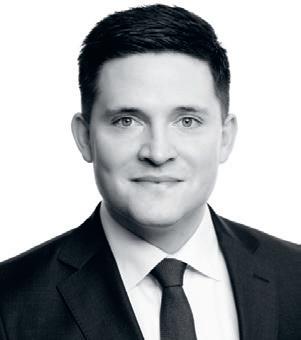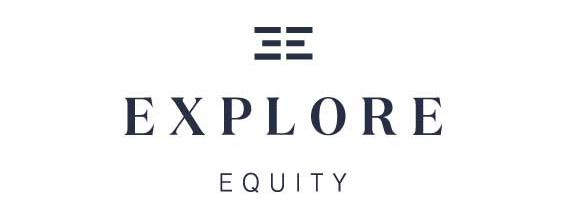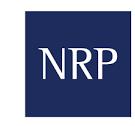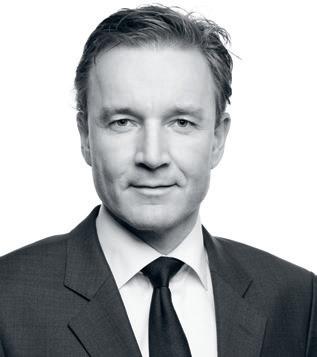
Norwegian Private M&A Survey 2023 Edition
Editorial team





2 <<< CONTENTS Editorial team 02 Norwegian M&A at a glance – 2021 & 2022 in review 03 Introduction 04 Trends in Norwegian SPAs 09 BAHR credentials 33 The Legal M&A Powerhouse in Norway 36 BAHR’s M&A Group 38 ØYSTEIN GUVÅG PARTNER T +47 908 31 527 E ogu@bahr.no MARCUS V. SIMENSEN ASSOCIATE T +47 918 82 122 E masim@bahr.no ANDERS HØIFØDT ADVISOR T +47 412 04 415 E anhoi@bahr.no LARS OLAV VISET MANAGING ASSOCIATE T +47 932 80 297 E laovi@bahr.no ANDRÈ HØGDAHL ASSOCIATE T +47 404 61 629 E anjeh@bahr.no
targets volume on
Norwegian M&A at a glance - 2021 & 2022 in review
sectors
TMT (22.0%)
316 DEALS
Most valuable sectors
Most active sectors
Most valuable sectors
#2: Industrials & chemicals (16.9%)
#3: Business services (16.2%)
Norwegian targets Overall volume on par with 2019
#1: Real estate (€5.27bn)
Most active sectors
#1: Real estate (€5.27bn)
9% from 2019*
€12.1bn
By volume 2022 2022
#1: Computer software (12,9 %)
#2: Transportation (€2.01bn)
#2: Energy (12,4 %)
#1: TMT (22.0%)
42%
#2: Transportation (€2.01bn)
#3: Services (other) (11,2 %)
#3: Energy, mining & utilities (€1.75bn)
By value
for Entra ASA, totalling €14.7bn
#2: Industrials & chemicals (16.9%)
#3: Business services (16.2%)
#1: Energy (€9,0 bn)
Deal value
#2: Seafood (€8,3 bn)
2021 2021
Most valuable sectors
#3: Energy, mining & utilities (€1.75bn)
€24.2bn €12.1bn
#1: Computer software (13,9 %)
#2: Energy (11,2 %)
#1: Real estate (€5.27bn)
#3: Services (other) (9,4 %)
of deals had foreign bidders in 2022. €22.2bn €24.2bn
#2: Transportation (€2.01bn)
#1: Medical (€6,1 bn)
increased by 9% from 2019*
#3: Energy, mining & utilities (€1.75bn)
#3: Computer services (€3,5 bn)
#2: Financial services (€4,5 bn)
€24.2bn €12.1bn
#3: Real estate (€3,9 bn)
* Numbers for 2020 include several bids for Entra ASA, totalling €14.7bn
Source: Mergermarket
Source: Mergermarket
3 >>>
2018 2019
2020
€22.2bn
42% of deals had foreign bidders in 2022. €22.2bn
increased by 9% from 2019* include several bids for Entra ASA, totalling €14.7bn Mergermarket
42% of deals had foreign bidders in 2022.
INTRODUCTION
While we have seen a historically strong post pandemic rebound in M&A activity, 2022 saw a fallback in the second half of the year, as market activity was affected by global geopolitical and macro-economic developments.
Financial markets thrive when growth outlook is strong and supported by good visibility. 2022 - on the contrary - was increasingly characterized by the post pandemic economic rebound coming to an end and widely felt uncertainty.
The war in Ukraine and cool Western – China relations provided a political backdrop of great uncertainty, and pointed to globalization generally slowing its pace.
Lower deal value in 2022 compared to 2021. Deal count holding up well indicating an increase in smaller transactions
4 <<<
M&A
Transaction value (EUR Bn)
Norwegian
activity at a glance
Transaction volume 47.3 25.5 323 569 627 32.6 0 10 20 30 40 50 0 100 200 300 400 500 600 700 800 2020 2021 2022 2020 2021 2022
Source: Mergermarket
On the economic front, we saw an increased focus on high inflation and rapidly increasing interest rates to combat the inflationary pressures. Rising interest rates have adversely affected M&A as financing has become more expensive and difficult to raise.

Particularly financial buyers have felt this effect. Out of the 10 largest transactions in Norway in 2022, only two were backed by financial buyers. In 2021, private equity was involved in 33% of the transactions, the same number for 2022 was 26%, and for 4Q 2022 only 23%.
Norway has to a large extent followed a similar trajectory to the rest of the world, but high activity in the energy space has to some degree offset other factors contributing negatively. The Oslo stock exchange has been virtually flat in 2022 compared to global indices that have experienced a larger fall, despite recovering a fair bit from post summer lows. The OSEBX’ outperformance is largely driven by oil & gas stocks, profiting from the energy prices.
Also in the M&A market, the energy transition - as well as energy security - have been key themes. The drive
5 >>>
Øystein Guvåg, Partner and Head of BAHR’s Corporate M&A group
OSE Energy index +52%
in 2022
towards ‘net zero’ has seen a number of high-profile renewable deals, including the acquisition of Fortum Oslo Varme by HitecVision, Hafslund Eco and Infranode. Higher prices for fossil fuels have also sparked M&A activity in the oil & gas space, including inter alia Aker BP’s acquisition of Lundin Energy, Sval Energi’s acquisition of the Martin Linge field from Equinor, as well as the joint venture of the subsea players Aker Solutions, Schlumberger and Subsea Seven.
The general market trends are also visible in our survey this year.
In our SPA sample for the most recent
period almost 90% of the transactions were the result of bilateral processes, compared to 75% for the whole sample. However, quite a few transactions were originally initiated as auctions but ended up as bilateral processes. In the current market climate with a lot of uncertainty there is typically more difficult to match buyers’ and sellers’ price expectations, and we have seen an increased focus on comprehensive due diligence. Hence, it is more challenging to create competition all the way to the finish line. Buyers are also less willing to take on transaction costs without the security of an exclusive process.
6 <<<
Feb '22 Mar '22 Apr '22 May '22 Jun '22 Jul '22 Aug '22 Sep '22 Oct '22 Nov '22 Dec '22 375,000 350,000 325,000 300,000 275,000 250,000 225,000 200,000 Mar '22 May '22 Jul '22 Sep '22 Nov '22 345,600 SSENX
Source: Pareto Securities
In the most recent period, we have also seen that smaller transactions represent a greater share of the total volume.
Smaller transactions and add-ons to larger platforms are generally less sensitive to availability of leverage finance. Out of all sellers, 62% were management / founders in the most recent period against 54% for the whole sample.
These transactions typically exhibit somewhat different characteristics. A typical example is that 82% of the transactions in the most recent period contained non-compete and non-
solicitation clauses compared to 70% for the sample as a whole.
So how is the M&A outlook for 2023?
Most market participants are generally looking to take a cautious approach. At least in the first part of the year, much of the general market uncertainty which we saw increased during 2022 is expected to continue. Financing conditions are expected to remain tight. The shift from growth to profits - that saw buyers focusing more on stable cash flow generating assets and less on high growth tech companieswill still be felt although tech activity is expected to return during the year.
Despite slow down in second half of 2022, activity level is healthy compared to the long term trend
7 >>>
Quarterly transactions
200 180 160 140 120 100 80 60 40 202013 2014 2015 2016 2017 2018 2019 2020 2021 2022
Source: Mergermarket
As a result of the market conditions, we are expecting to see more creative structures. Earn-out provisions will likely continue to be discussed, and financial players will consider establishing continuation vehicles or similar structures to fund the next wave of growth for quality assets. We may also see more all equity deals and minority stakes changing hands.

Like many other smaller currencies, the NOK has over a period depreciated heavily against particularly the USD. This should make Norwegian assets more attractive to USD denominated buyers.
At some point most market participants expect key market conditions to stabilize, which is likely to lead to a higher activity in the M&A market, particularly if debt financing with acceptable pricing is also available. Private equity funds have a lot of dry powder and are willing to deploy it –they will be chasing new acquisitions, especially if the sellers’ value expectations are revised so that the ‘pricing gap’ for non-listed targets is reduced. At that time, we are expecting to see a good flow of attractive opportunities coming to the market. Timing, however, remains to be seen.
8 <<<
Trends in NORWEGIAN SPAs
About the sample ~ 170 SPAs
Total purchase price NOK 121 bn
Time span 2017-2022

9 >>>
Earn-out more common in volatile markets
Earn-out or other deferred compensation?
More than one in four deals include some type of earn-out or deferred contingent payment regime.
The share of transactions containing an earn-out or similar provision has increased somewhat. Before the pandemic on average 24% of transactions contained such provisions. In the 2020-21 period the figure rose to 37% before falling back to 26% for 2022.
The above is consistent with the overall market characteristics which we have observed.
In 2021 we were still in the midst of the pandemic. Deal making recovered relatively quickly but
uncertainty related to future performance was high. This resulted in an upswing for earn-out mechanisms as a way to allocate risk between buyers and sellers.
Bilateral processes have also dominated in the recent period. While it is usually more challenging for a bidder to get acceptance for earn-out provisions in auctions, these are more commonly discussed and agreed in bilateral processes.
Earn-out clauses are most commonly linked to targets’ EBITDA for a 12-24 months period of time.
10 <<<
No 72% Yes 28%
Locked box remains the dominant pricing mechanism
Locked box has manifested its position as the dominant mechanism for determining purchase price in the Norwegian market.
In general, the locked box mechanism appeal more to market participants in Norway, compared to certain other jurisdictions.
There is also a clear distinction between financial and industrial buyers. For financials buyers locked box is dominant, being used in 85% of the transactions. For industrial buyers the corresponding figure is only 53%.
In a locked box deal the target is priced based on a historical balance
sheet, ensuring that the pricing discussions are completed prior to signing. In practice, disputes related to closing balance sheets are relatively common.
11 >>>
31% 69% Closing Balance Sheet Locked Box
Large spread in locked box interest
Over 60% of our sample does not have a specific locked box interest rate set out in the SPA. There are numerous explanations for this.
In most deals the locked box interest is a result of comprehensive negotiations and as such implicitly included in a fixed purchase price.
For simpler deals with a very short period from the locked box date to closing the interest component may also be deemed immaterial by the parties.
With respect to the deals where a specific interest rate is included in the SPA, the interest component varies quite a bit. Approximately 2/3 have interest of 5% or less, and approximately 80% of the transactions have interest of 7% or less.
Traditionally, the purpose of the locked box interest has been to compensate the seller for the cash flow of the target from the locked box date until closing. Generally, the level of locked box interest appears low relative to a reasonable expectation for average cash flow yield. The locked box interest is often closer to the interest level on a safe vendor note.
We have not yet seen a clear upward trend in the locked box interest rate in tandem with increasing interest rates generally. However, we expect to see this effect more going forward.
12 <<<
9+% - 11% 7+ - 9% 5+% - 7% 3% - 5% 3-% No Interest 4% 3% 6% 17% 7% 64%
We differentiate between ‘true MAC clauses’ and ‘warranty MAC clauses’.
A true MAC clause relieves the buyer of its obligation to complete the transaction if a material adverse change occurs between signing and closing. In most cases, a true MAC clause requires a specific material adverse change with respect to the target company and its business (‘target business mac’), as opposed to a general ‘market MAC’ or ‘industry MAC’.
A warranty MAC relieves the buyer of its obligation to complete the transaction if the seller is in material breach of its warranties.
During the last couple of years, we have see a clear trend where the warranty MAC is the norm, while the true MAC is only agreed on an exceptional basis.
The use of MAC and equivalent clauses is often driven by conditions attached to the buyer’s debt financing and/or the exclusion of coverage for matters arising between signing and closing under M&A insurance policies.
42% 46% Yes, MAC
12% Yes; "no
No 13 >>>
clause
material breach of warranties"
No material adverse change as a condition for closing
Competition clearance
Anti-trust approval as a CP "Hell or high water" anti trust clause
In deals where competition filing is required, the parties will typically regulate how the antitrust risk shall be allocated in the event that the authorities do not approve the transaction, or is only willing to approve it subject to further conditions.
In the majority of cases the buyer is not required to complete the transaction unless antitrust clearance (without any conditions) is obtained.
Further, it is not unusual to agree that the buyer shall also be required
to accept conditions from the competition authorities which are reasonable to the buyer.
In a limited number of deals, strict “hell and high water” clauses are agreed. Under such provisions the buyer is obliged to take all necessary steps and comply with any remedies which the competition authorities require to approve the deal (including making divestments etc), even if such remedies could be considered unreasonable for the buyer.
No 60% Yes 40% No 88% Yes 12% 14 <<<
Seller’s warranties shall be true both on signing and closing
When the sellers´ warranties shall be true
As in previous surveys the clear market standard is that the seller’s warranties shall be true both at signing and at closing.
At signing and closing At closing only At signing only 86% 6% 8% 15 >>>
A general disclosure warranty is market standard
91% include a general disclosure warranty
A general disclosure warranty is market standard. There is no change on this metric relative to previous surveys.
These provisions are typically qualified by materiality and/or seller’s knowledge. In 65% of the SPAs in our sample, the general disclosure warranty was qualified by seller’s knowledge.
Under Norwegian background law sellers have a statutory disclosure obligation towards the buyer.
As such, a general disclosure warranty is in line with legal traditions in Norway.
Most SPAs in our sample explicitly exclude the use of background law, wholly or partially. However, certain SPAs are either silent or not clear on this matter, and hence, potentially subject to the principals of background law.
No 9% Yes 91% 16 <<<
Definition of seller’s knowledge
We see different definitions of seller’s knowledge in the sample. The most common is "seller's actual knowledge".
Particularly when it comes to insured transactions actual knowledge is market.
44% 20% 22% 15% Actual knowledge Must know (Nw: måtte kjenne til) Ought to know (Nw: burde kjenne til) Not de ned 17 >>>
Scope of disclosure warranty
Which information is included
The scope of the general disclosure warranty is most often limited to information provided in the dataroom only. This share has increased lately and in the most recent period it was above 60%.
Limiting the warranty to information in the data room increases the control for the seller and makes it easier for the seller to correct information that is wrong or inaccurate. There are no clear differences between different buyer and seller groups, but financial sellers and
Anti-sandbagging provision
buyers, on the margin appears to have a stronger preference for data room only compared to other groups.
Approximately 80% of SPAs contain an explicit “anti- sandbagging” provision. Such provisions prevent the buyer from bringing claims based on matters known to the buyer at signing. Most SPAs exclude seller's liability if the matter has been ‘fairly disclosed’ prior to signing.
56% 44% All information provided to buyer Information in the dataroom only No 21% Yes 79% 18 <<<
Warranty period mostly in 18-24 month range
An 18-month general warranty period is the most common. This allows the buyer a full audit cycle to bring forward any claims.
For insured transactions a 24-month general warranty period is the clear market standard.
The distribution is virtually unchanged relative to previous surveys.
24 months 18 months 12 months 33% 48% 19% 19 >>>
Compared to general warranty periods the warranty period for fundamental warranties (such as title and capacity warranties) exhibits much greater variability.
Although the length of the period varies it is clear that in most transactions the warranty period for fundamental guarantees is distinctly longer than the general warranty period.
No limitation 7 years 5 years 3 years 18 months 6% 34% 20% 28% 13% 20 <<<
Fundamental warranty periods vary more
Tax warranty periods are longer
The share of transactions with a 7 year tax warranty period increased from 33% to 40%. Only 16% in the most recent period was linked to the statutory limitation period, compared to 32% for the previous period.
In the entire sample more than 80 % of the transactions have 5 year or longer tax warranty period. As a comparison the same figure for
fundamental warranties is around 60%. This can indicate that breaches of fundamental warranties are more likely to be discovered within reasonable time, whereas tax matters may go back a longer time.
Statutory lmitation period 28% 7 years 35% 5 years 21% 3 years 7% 18 months 10% 21 >>>
Environmental warranties do not generally have longer warranty periods. More than 80% of the transactions are within 18-24 months, which is the typical general warranty period.
However, in the remaining 20% of transactions we see a variety of relative long periods.
5 years and above 3 to 5 years 2 years 18 months 9% 8% 35% 47% 22 <<<
Most transactions do not have longer period for environmental warranties
Relative notice period for warranty claims
Buyer's time to react
Explicit relative time limits are included in most SPAs.
60 days is the most common period and the average is 58 days, which represents a slight increase from the previous survey. This is driven by more transactions having 90 days. Only 13% of the total sample uses “within reasonable time” which is the solution under Norwegian background law.
In a number of transactions, it is agreed that buyer’s failure to make a claim within the relative time period does not restrict the buyer from bringing the claim, however excess loss resulting from the delay is not recoverable.
Within reasonable time 90 days 60 days 45 days 30 days 13% 16% 41% 18% 12% 23 >>>
Scope of loss covered
The survey indicates a clear trend towards “reasonable and foreseeable loss” as the dominating market standard.
In the most recent period 90% of transactions fell into this category.
Reasonably foreseeable loss (direct and indirect) 74% Direct loss only 26% 24 <<<
Use of M&A insurance
M&A insurance becomes more and more customary, and is very often considered even if the transaction is relatively small.
M&A insurance is particularly frequently used in larger transactions and transactions involving financial sellers and buyers.
The product facilitates a “clean exit” for the seller, with a corresponding opportunity to use and/or distribute
the sales proceeds, which is particularly key to private equity funds.
With a highly competitive M&A insurance market, the trend with low premiums and extensive coverage continues. However, the insurers still require that the buyer performs a thorough due diligence review.
No 78% Yes 22% 25 >>>
De-minimis typically 0.1 % of purchase price
Most transactions limit the buyer’s right to make claims based on insignificant losses. The starting point for determining the de minimis is typically 0.1% of the purchase price, however, our survey shows widespread variations.
We typically see higher relative values in smaller transactions, as matters should have a minimum absolute size to justify the process of bringing forward and dealing with a warranty claim.
In our data this is evidenced by the simple average being 0.24% while the value weighted average is 0.08%.
0,15% + 0,11-0,15% 0,09-0,11% 0-0,09% No de-minimis 26 <<<
Basket typically 1% of purchase price
Tipping basket
Almost all SPAs contain a “basket” liability threshold to prevent buyers from claiming compensation unless their total loss exceeds a certain level.
The starting point for determining the basket size is typically 1% of the purchase price. Only 3% of transactions do not have a basket.
The simple average value in the sample is 1.35% while the value weighted average is 0.71%.
Around 80% of the transactions have
a tipping basket, meaning that once the minimum aggregate threshold is met, the buyer is entitled to full compensation.
2 %+ 14% 1-2 % 40% 0-1 % 43% No basket 3% No 19% Yes 81% 27 >>>
Sellers rarely accept uncapped liability
The percentage warranty cap is usually higher for smaller transactions. This is evidenced by a simple average of 31.7% compared to a value weighted average is 22.2%.
In general, the average warranty cap is also higher in insured deals (40%) compared to non-insured deals (29%)
In total, as much as 39% of the deals have a cap which exceeds 35%.
Specific indemnities and fundamental warranties are often carved out of the general warranty cap, having separate caps often at the full purchase price.
100% + 100% 75-99% 50-75% 35-50% 25-35% 20-25% 0-20% 2% 6% 2% 5% 23% 24% 21% 16% 28 <<<
The are no major changes in this survey related to security for warranty claims.
In the recent period, 60% of transactions do not have explicit security for warranty claims. In many of these transactions the sellers have reinvested alongside the buyer, and often pledged their investment as security for fulfilling their contractual obligations. Such reinvestment may in
practice provide a form of security for the buyer.
Out of the different security types the most common is M&A insurance, which is used in 22% of the transactions.
No security Yes; M&A insurance Yes; earnout/deferred payments (with set-o right Yes; separate guarantee Yes; escrow arrangement 7% 7% 11% 22% 54% 29 >>>
Security for warranty claims is relatively common
Non-compete and non-solicitation clauses are common and occur in 70% of the transactions. For the recent period more than 80% of transactions contain such clauses.
One explanation is the increased share of founder/management sellers. In these transactions noncompete and non-solicitation clauses are typically key to the commercial rationale of the transaction.
For the transactions with financial sellers non-compete and nonsolicitation clauses are less common but still appear in more than half of the transactions. This is often a difficult negotiation point. Generally, it is problematic for private equity managers to undertake restrictions with respect to other investments and portfolio companies for their current and/or future funds. As such, specific compromises must be worked out on this point.
No 30% Yes 70% 30 <<<
Non-compete and non-solicitation restrictions are key
Duration of non-compete and nonsolicitation clauses
The length of the non-compete and non-solicitation clauses are most commonly two years, and 2-3 years are used in over 80% of the deals where such restrictive covenants are agreed.
Only 5% have longer time periods than three years and 12% have shorter periods than two years.
Shorter time periods may typically be discussed in situations with multiple sellers, and employees holding relatively small stakes, to create a fair balance between proceeds received and the restrictions which the non-compete and non-solicitation undertakings involve.
3 years + 2-3 years 2 years 1-2 years 0-1 year 5% 41% 43% 7% 5% 31 >>>
Ordinary courts is the most common dispute resolution mechanism
The choice between arbitration and ordinary courts as dispute resolution mechanism tend to fluctuate a bit over time, driven by market trends and the preferences of individuals buyers and sellers.
Low publicity, qualified tribunals and efficient processes to conclude the case as fast as possible are generally benefits of arbitration.
Correspondingly, potentially lower costs and the opportunity to appeal are benefits of using ordinary courts.
For the whole sample it is almost evenly distributed.
In the recent sampling period, ordinary courts were agreed in over 60% of the transactions.
There is a pattern related to transaction size. Arbitration is the most common for larger transaction. Out of the 10 largest transactions in the recent period 70% used arbitration.
Foreign buyers typically also have a preference for arbitration as they are less familiar with the workings of the Norwegian courts.
46%
54%
32 <<<
Arbitration
Ordinary courts
BAHR credentials
 Oslo, Bjørvika: The Opera House.
Oslo, Bjørvika: The Opera House.
Recent transactions advised by BAHR
Acquisition of NTS by Salmar




Sale IT Verket from Bertel O. Steen Kapital

Acquisition of Ryde Technology by Equip Capital




Sale of Mintra Holding from Riverside



Acquisition of Bastard Burgers by Equip Capital
Acquisition of Fortum Oslo Varme by consortium of HitecVision, Hafslund E-Co and Infranode

Share sale from Aker BP to Saudi Aramco
Acquisition of Vera Tank by Explore Equity


Acquisition of Servicenord Engros by Axcel



Subsea Joint Venture
Sale of Otera to VINCI Energies
Acquisition of Montel by Riverside
34 <<<
Acquisition of Pelias and Terminix by Norvestor

Acquisition of stake in Vårgrønn by HitecVision

Sale of Kvitebjørn Varme to Saren Energy

Acquisition of Seacloud by Bluefront Equity


Sale of NRP’s real estate business to Swiss Life

Share sale from Aker Horizons to Hanwha

Sale of PTG to Nordic Climate Group

Acquisition of ResQ by AP Moller-Maersk
Acquisition of Kraft Laks by Salmon Evolution
Acquisition of Lundin Energy by Aker BP

Acquisition of Telenor Fiber by consortium (incl. KKR and Oslo Pensjonsforsikring)

Acquisition of Position Green Group by Norvestor




35 >>>
The Legal M&A Powerhouse in Norway
• Corporate M&A has formed the core of BAHR’s practice since its inception over 50 years ago and transactional work is at the very heart of everything that BAHR does.
• Our M&A team has consistently been ranked Tier 1 by all leading rating agencies, and it remains so today. Our practice covers all types of private and public transactions, including private acquisitions, public takeovers, co-investments, other syndicated transactions, restructurings and exits, joint ventures, IPOs, mergers and demergers.
• The team draws on expertise from across the firm and all main industries to bring clients a comprehensive service with a commercial and tailored outlook. A seamless approach to large, complex and often multijurisdictional corporate transactions is among the hallmarks of BAHR’s practice.
• We believe well-organized and focused teams based on the ”best person for the job” principle are best suited to efficiently work on complex matters. While we will never compromise on the staffing and resources required to do the job, we aim at a lean and costefficient approach, as evidenced by our slogan: “Small teams for big matters”
Top ratings, Tier 1 and Band 1, in all the major national and international rankings for Corporate M&A
ChambersGlobalChambersEuropeLegal500 IFLR1000 Prospera 36 <<<
Corporate firm of the year Norway.
-IFLR Europe awards 2021
Outstanding team offering expertise on all corporate and M&A matters, including both public and private transactions.
- Chambers Global
BAHR’s ‘first-class legal knowledge’ makes it a powerhouse in the market for domestic and international M&A, regularly handling high-profile mandates with notable expertise in the private equity, energy, real estate and infrastructure sectors”
- Legal 500
BAHR is a leader in the market for large transactions, with considerable strength in the oil and energy sector, and an impressive track record in infrastructure deals and real estate M&A. 'With a wide range of knowledge and capabilities', the group has an impressive roster of clients, ranging from engineering companies to international investors. Other core segments of the practice include work in the private equity space, with an excellent fund formation, investment fund and asset management practice"
- Legal 500
37 >>>
BAHR’s M&A Group
ANDREAS RØRVIK
PARTNER
T +47 916 04 805
E aro@bahr.no
ANNE SOFIE BJØRKHOLT



PARTNER
T +47 970 22 193
E asb@bahr.no
ASLE AARBAKKE
PARTNER
T +47 928 81 441
E aaa@bahr.no
BØRRE SOFUS ARNET PARTNER





T +47 930 54 063
E bsa@bahr.no
ANNE DAHL FRISAK
PARTNER
T +47 918 38 267
E andfr@bahr.no
ARNE TJAUM
PARTNER
T +47 950 39 851
E at@bahr.no
BERET SUNDET
PARTNER
T +47 928 81 385
E bsu@bahr.no
CAMILLA JØTUN
PARTNER
T +47 930 33 455
E camilla.jotun@bahr.no
38 <<<
ERIK LANGSETH PARTNER




T +47 412 16 634 E ela@bahr.no
JONATHAN UGGEDAL PARTNER
T +47 47 611 176 E jongj@bahr.no
LARS G. NORHEIM
PARTNER
T +47 928 80 030 E lgn@bahr.no
MORTEN P. SMØRDAL
PARTNER
T +47 911 98 980 E mps@bahr.no
GEIR GUSTAVSSON PARTNER




T +47 982 40 524 E ggu@bahr.no
JON CHRISTIAN THAULOW PARTNER
T +47 905 29 550 E jct@bahr.no
LARS KNEM CHRISTIE PARTNER
T +47 924 95 977 E lkc@bahr.no
OLE ANDREAS DIMMEN PARTNER
T +47 414 388 21 E oadim@bahr.no
39 >>>
PETER HAMMERICH
PARTNER
T +47 928 81 389
E ph@bahr.no
RUNE SVOREN
PARTNER
T +47 928 81 428
E rs@bahr.no
SVEIN GERHARD SIMONNÆS

PARTNER
T +47 908 31 527
E sgs@bahr.no
ROBBIN BAKKEN
PARTNER
T +47 934 09 900
E rba@bahr.no
STIG KLAUSEN ENGELHART





PARTNER
T +47 470 11 112
E skl@bahr.no
THOMAS K. SVENSEN
PARTNER
T +47 924 04 921
E tks@bahr.no
40 <<<
Key Contacts
ØYSTEIN GUVÅG PARTNER


T +47 908 31 527
E ogu@bahr.no
Disclaimer
T +47 908 58 464
E lks@bahr.no
This survey contains information in summary form and is therefore intended for general guidance only. It is not intended to be relied upon as legal advice or be a substitute for detailed research or the exercise of professional judgement. Please refer to your advisors for specific advice. BAHR will not accept any responsibility for loss occasioned to any person acting or refraining from action as a result of any material in this survey.
41 >>>
LARS KRISTIAN SANDE PARTNER

Advokatfirmaet BAHR AS www.bahr.no










 Oslo, Bjørvika: The Opera House.
Oslo, Bjørvika: The Opera House.

















































